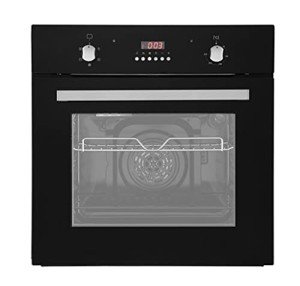The Rise of Built-In Ovens: A Seamless Approach to Modern Cooking
In contemporary kitchens, where design aesthetics blend effortlessly with functionality, one device sticks out as a real game changer: the built-in oven. As homeowners and chefs alike continue to seek ingenious options that boost their cooking experience, built-in ovens have become progressively popular. This post checks out the advantages, considerations, and patterns surrounding built-in ovens, highlighting why they are a vital feature in contemporary cooking areas.
What is a Built-In Oven?
A built-in oven is a kitchen area appliance designed to be integrated into the cabinetry of a kitchen area rather than standing alone. Unlike standard freestanding ovens, which can be moved and placed anywhere, built-in ovens can be found in various styles and sizes to fit specifically within designated areas. Readily available in single or double setups, these ovens use a streamlined look that complements modern-day kitchen area styles.
talks about it of Built-In Ovens
1. Space-Saving Design
Among the most attractive advantages of built-in ovens is their space-saving design. By integrating the oven into kitchen cabinetry, you can release up valuable counter and floor space. This is especially helpful in smaller sized kitchen areas, where optimizing room is necessary. Built-in ovens can be installed at eye level, making them more accessible and reducing the requirement to bend down.
2. Aesthetic Appeal
Built-in ovens add to a streamlined and cohesive kitchen design. Readily available in different finishes-- such as stainless-steel, black, white, and custom kitchen cabinetry-- they can mix effortlessly into the overall design. This visual appeal boosts the kitchen area's visual consistency and raises the space, developing a modern and advanced environment.
3. Improved Functionality
Many built-in ovens come equipped with innovative cooking innovations, such as convection cooking, steam ovens, and clever functions. These enhancements allow for flexible cooking alternatives, making it much easier to attain professional-level results in your home. Smart built-in ovens can even link to Wi-Fi, making it possible for users to manage the oven remotely, get notifications, and gain access to a range of cooking programs and dishes.
4. Enhanced Ventilation
Due to the fact that built-in ovens can be integrated with cooking area hoods and ventilation systems, they can help preserve much better air quality and lower cooking odors. This is especially considerable for those who love to prepare with fragrant spices and ingredients, as a reliable ventilation system can keep the kitchen area comfy and inviting.
5. Personalization Options
Built-in ovens offer a wide variety of customization options to fit private cooking styles and requirements. From professional-grade appliances with multiple cooking modes to compact styles for smaller cooking areas, property owners can select the oven that fits their particular requirements. Lots of producers also use adjustable front panels, permitting you to match the oven's look to your cabinets for a truly unified appearance.
Considerations When Choosing a Built-In Oven
While built-in ovens have numerous advantages, there are necessary considerations to keep in mind before making a purchase:
1. Cost
Built-in ovens typically feature a higher rate tag than their freestanding counterparts due to their design and setup requirements. It's essential to consider both the expense of the oven and any extra expenditures connected to kitchen cabinetry modifications or setup.
2. Setup Requirements
Setting up a built-in oven frequently needs professional support, especially if you require to customize existing kitchen cabinetry. Ensure that you consider any costs associated with setup, consisting of labor and potential kitchen cabinetry modifications.
3. Size and Dimensions
Before buying a built-in oven, determine the designated space precisely to ensure an appropriate fit. Built-in ovens been available in numerous sizes and configurations, so selecting one that aligns with your needs and kitchen area design is vital.
4. Lifestyle and Usage
Consider your cooking habits and needs when selecting a built-in oven. If you often host big events, a double oven might be more useful. On the other hand, if you have a compact kitchen, a single-wall oven might be sufficient.

Patterns in Built-In Ovens
The kitchen appliance market is continuously progressing, and built-in ovens are not exempt from emerging patterns. Some existing trends include:
Smart Technology Integration: With the rise of clever home technology, built-in ovens now often feature connection alternatives. This permits users to keep an eye on cooking development and change settings via mobile apps.
Energy Efficiency: As sustainability becomes a priority, many makers are buying energy-efficient built-in ovens that minimize energy usage while keeping performance.
Multi-functional Designs: Built-in ovens now provide functions such as air frying, slow cooking, and steaming, supplying adaptability that meets a large range of cooking techniques.
Conclusion
Built-in ovens undoubtedly represent a perfect mix of style, function, and benefit in today's kitchen areas. As more house owners opt for this contemporary service, the focus shifts to creating a cooking space that is as visually pleasing as it is useful. Whether you are constructing a new home or remodeling your kitchen, considering a built-in oven might raise your cooking experience and change your kitchen area into an elegant and practical haven. With a variety of alternatives offered and continuous developments in technology, built-in ovens stay a standout choice for both amateur cooks and cooking lovers alike.
